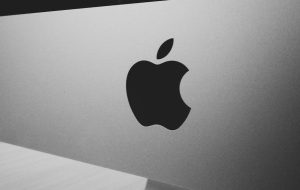Apple Inc. (NASDAQ: AAPL) continues to affirm its position as a global technology leader through technology innovation, organizational change and strategic supply chain decisions. As of July 9, 2025, the share price was around $210.01, with the company’s market capitalization exceeding $3.28 trillion. The price to earnings (P/E) ratio is 33.7, while the earnings per share (EPS) is $6.42.
1. Geopolitical Challenges and Changing Supply Strategy
Apple is facing increasing pressure from U.S. policymakers, particularly in the context of its continued reliance on the Chinese manufacturing ecosystem. Former US presidential advisor Peter Navarro has publicly criticised Apple’s manufacturing ties to China, describing them as ‘unacceptable’. In response to these challenges, Apple announced a strategic initiative to invest USD 500 billion to expand its manufacturing and development capabilities in the United States. However, analysts have warned that moving production out of China could lead to cost increases of up to 90%.

2. Organizational Restructuring and Staffing Changes
In July, Apple announced changes to the company’s senior leadership. The current head of global operations, Sabih Khan, will now serve as Chief Operating Officer (COO). The move is in response to the retirement of former COO Jeff Williams. The change also includes a reorganisation of the design team, which will now report directly to CEO Tim Cook – marking a move to strategically centralise the management of the company’s key creative units.
3. Software Innovation: Liquid Glass and Apple Intelligence
At the WWDC 2025 developer conference, Apple unveiled a new design language, “Liquid Glass,” that brings a unified user interface across platforms (iOS, macOS, iPadOS). The focus is on transparency, dynamic reflections, and physically realistic glass displays. In parallel, Apple has integrated advanced artificial intelligence features into the systems under the Apple Intelligence label, which include generative AI, real-time translation, content creation and “Genmoji”. These features will be available locally on the device without the need for an internet connection.
4. The new iPhone 17 and product portfolio outlook
The market is expecting the introduction of the iPhone 17 series in autumn 2025, comprising four models – including a new iPhone 17 Air variant. Key innovations will be the A19 chip, ProMotion displays and titanium body. The highest-end models will bring camera enhancements, new materials and a redesigned Dynamic Island design.
5. Regulatory pressures and litigation in the EU
In July, Apple appealed against a €500 million fine imposed by the European Commission for allegedly breaching Digital Markets Act rules in relation to its management of the App Store. The company claims that the new regulations lead to confusion for developers and users and violate the principle of a single interface.

Conclusion
Apple enters the second half of 2025 with a clear strategy to diversify production, emphasizing AI and redesigning the software environment. These steps can have a positive impact on long-term growth, although the company also faces challenges in the form of regulatory constraints and geopolitical tensions. Investors remain cautiously optimistic, with the current level of the stock reflecting both expectations from technological innovation and an elevated level of external risks.
The company also pays a regular quarterly dividend. The dividend yield is currently $0.26 per share. The company’s own dividend has been approved by the company’s board of directors at 0.50% p.a. The average target price for the stock for the short- to medium-term investment horizon has been set by Zacks.com at $230.92 per share.



